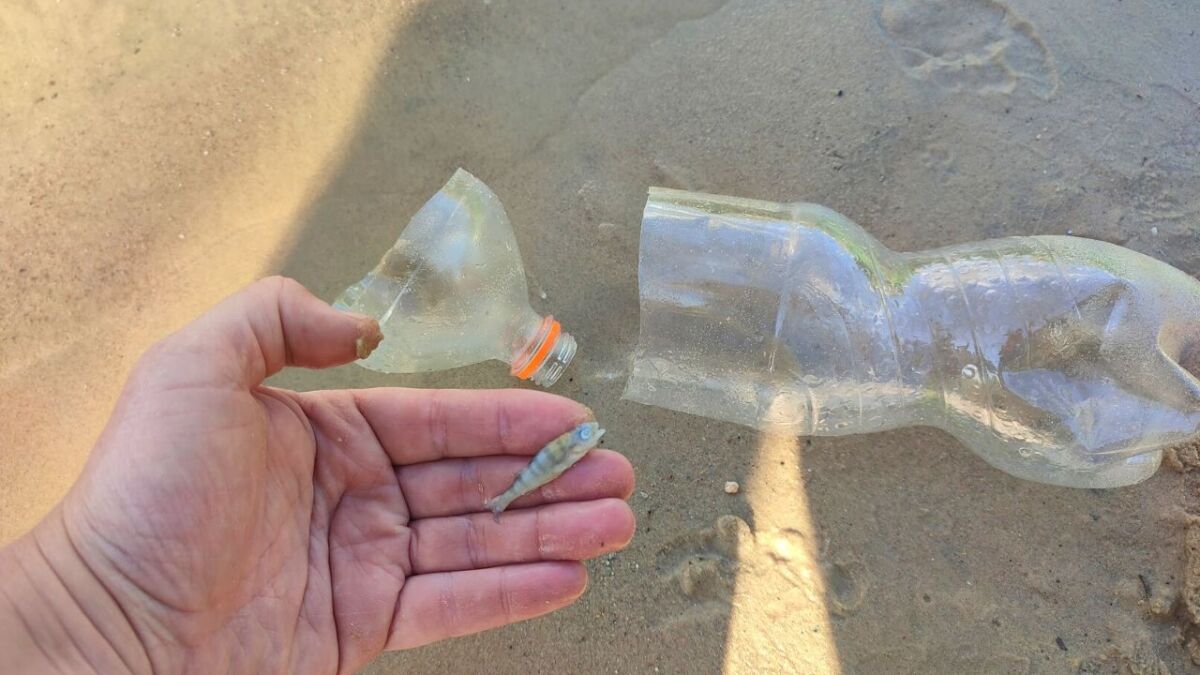
Fish traps
Noun
Meaning
Fish traps are ingenious devices used in survival, bushcraft, and outdoor activities to catch fish without the need for constant monitoring or active fishing. These traps are designed to lure fish into an enclosed space, making it easier to catch them for food. They are typically made from natural materials found in the wilderness, such as sticks, vines, or rocks, and can be set up in rivers, streams, or lakes. Fish traps are an essential tool for anyone venturing into the wild, providing a reliable and efficient method of securing a food source while conserving energy and time.

Examples
„I love using fish traps when I go camping near rivers or lakes. They are a great way to catch fish without having to actively fish all the time.“
„My friend told me about a clever fish trap design he saw online. It's made from bamboo and uses a funnel system to catch the fish.“
„During our survival training, we learned how to make fish traps using natural materials like vines and branches. It was fascinating to see how effective they can be.“
„When I was hiking in the wilderness, I stumbled upon an abandoned fish trap near a stream. It was a reminder of how people have been using these traps for centuries.“
„I always carry a small fish trap in my backpack when I go on outdoor adventures. You never know when you might come across a perfect spot to set it up and catch some fresh fish.“
Origin
The word "fish traps" originates from the practice of using various types of contraptions to catch fish. The concept of fish traps can be traced back to ancient times, with evidence of their use found in archaeological sites around the world.
These traps have their roots in the ingenuity and resourcefulness of early human civilizations, who devised clever methods to secure a reliable food source from bodies of water. The exact origins of fish traps are difficult to pinpoint, as different cultures and regions developed their own unique designs and techniques.
Over time, fish traps have evolved and adapted to different environments and fishing practices. They have been used in rivers, lakes, and coastal areas, with variations in design and construction depending on the specific needs and conditions of the location.
Today, fish traps continue to be used by fishermen and survivalists alike. They offer an efficient and sustainable method of catching fish, often requiring minimal effort and resources. Modern fish traps are typically made from materials such as nets, wire mesh, or bamboo, and can be set up in various configurations to target specific fish species.
Whether you're a seasoned angler or a survival enthusiast, understanding the principles and techniques behind fish traps can be a valuable skill in your outdoor pursuits. By learning how to construct and deploy fish traps, you can increase your chances of securing a reliable food source in a wilderness setting.
Synonyms
Fish nets, Fishing traps, Angling traps, Fish cages, Fish snares, Fish weirs, Fish baskets, Fish pots
Antonyms
Release, Free, Let go, Liberate, Emancipate, Loose, Unbind, Untie
Relatives
Fishing nets, Angling, Spearfishing, Fish hooks, Fish baskets, Fish weirs, Fish ladders, Fish migration
Historical and cultural importance
Fish traps have a long history and cultural significance in many societies around the world. They have been used for centuries as a method of catching fish and other aquatic creatures, providing a reliable source of food for communities living near rivers, lakes, and oceans.
In ancient times, fish traps were often constructed using natural materials such as rocks, sticks, and reeds. These traps were designed to take advantage of the natural behavior of fish, using barriers or funnels to guide them into a confined space where they could be easily caught. Different cultures developed their own unique styles of fish traps, each tailored to the specific conditions and fish species found in their region.
For example, Native American tribes in North America used fish weirs, which were long fences made of wooden stakes driven into the riverbed. These weirs created a series of narrow channels that directed fish towards a central trap, where they could be easily harvested. In Southeast Asia, bamboo fish traps were commonly used, with intricate designs that allowed fish to enter but made it difficult for them to escape.
Today, fish traps continue to be used in many parts of the world, both for subsistence fishing and commercial purposes. Modern fish traps are often made from durable materials such as wire mesh or plastic, and they can be highly efficient in catching large quantities of fish. However, there is also a growing awareness of the need to use sustainable fishing practices and minimize the impact on fish populations and their habitats.
More information about the term Fish traps
Fish Traps: A Clever Way to Catch Your Dinner
When it comes to survival in the wilderness, finding food is always a top priority. While fishing with a rod and reel is a popular method, there are times when you may not have access to these tools or the patience to wait for a bite. That's where fish traps come in handy. These clever contraptions can help you catch fish while you focus on other essential tasks.
How Fish Traps Work
Fish traps are simple yet effective devices designed to lure and capture fish. They typically consist of a container or enclosure with an entrance that allows fish to swim in but makes it difficult for them to escape. The traps are strategically placed in bodies of water where fish are known to gather, such as rivers, streams, or lakes.
Once inside the trap, the fish are unable to find their way out due to the design of the entrance. Some traps use funnels or narrow openings that make it challenging for fish to navigate their way back. Others rely on mesh or netting that allows fish to swim in but prevents them from swimming out.
Types of Fish Traps
There are various types of fish traps, each with its own unique design and purpose. Here are a few examples:
1. Basket Traps: These traps are made from woven materials such as willow branches or wire mesh. They are lightweight, portable, and easy to set up. Basket traps are particularly effective for catching smaller fish.
2. Funnel Traps: As the name suggests, these traps have a funnel-shaped entrance that leads into a holding chamber. The narrow opening makes it difficult for fish to escape once they swim in. Funnel traps are commonly used for catching larger fish.
3. Net Traps: Net traps are made from fine mesh netting that allows water to flow through while trapping fish inside. They are often used in shallow waters or areas with strong currents. Net traps can be set up in various configurations, such as a hoop net or a fyke net.
Advantages of Using Fish Traps
Using fish traps offers several advantages for survivalists and outdoor enthusiasts:
1. Passive Fishing: Once set up, fish traps require minimal effort to catch fish. You can focus on other tasks such as building a shelter or gathering firewood while the trap does the work for you.
2. Increased Catch Rate: Fish traps can catch multiple fish at once, increasing your chances of securing a meal. This is especially beneficial in situations where food is scarce or when you need to feed a group of people.
3. Versatility: Fish traps can be used in various aquatic environments, including rivers, lakes, and even tidal areas. This versatility allows you to adapt to different fishing conditions and increase your chances of success.
Conclusion
When it comes to survival in the wild, fish traps are a valuable tool to have in your arsenal. They offer a passive and efficient way to catch fish, ensuring that you have a reliable source of food. Whether you choose a basket trap, funnel trap, or net trap, mastering the art of fish trapping can greatly enhance your survival skills and increase your chances of thriving in the wilderness.
Back to overview

